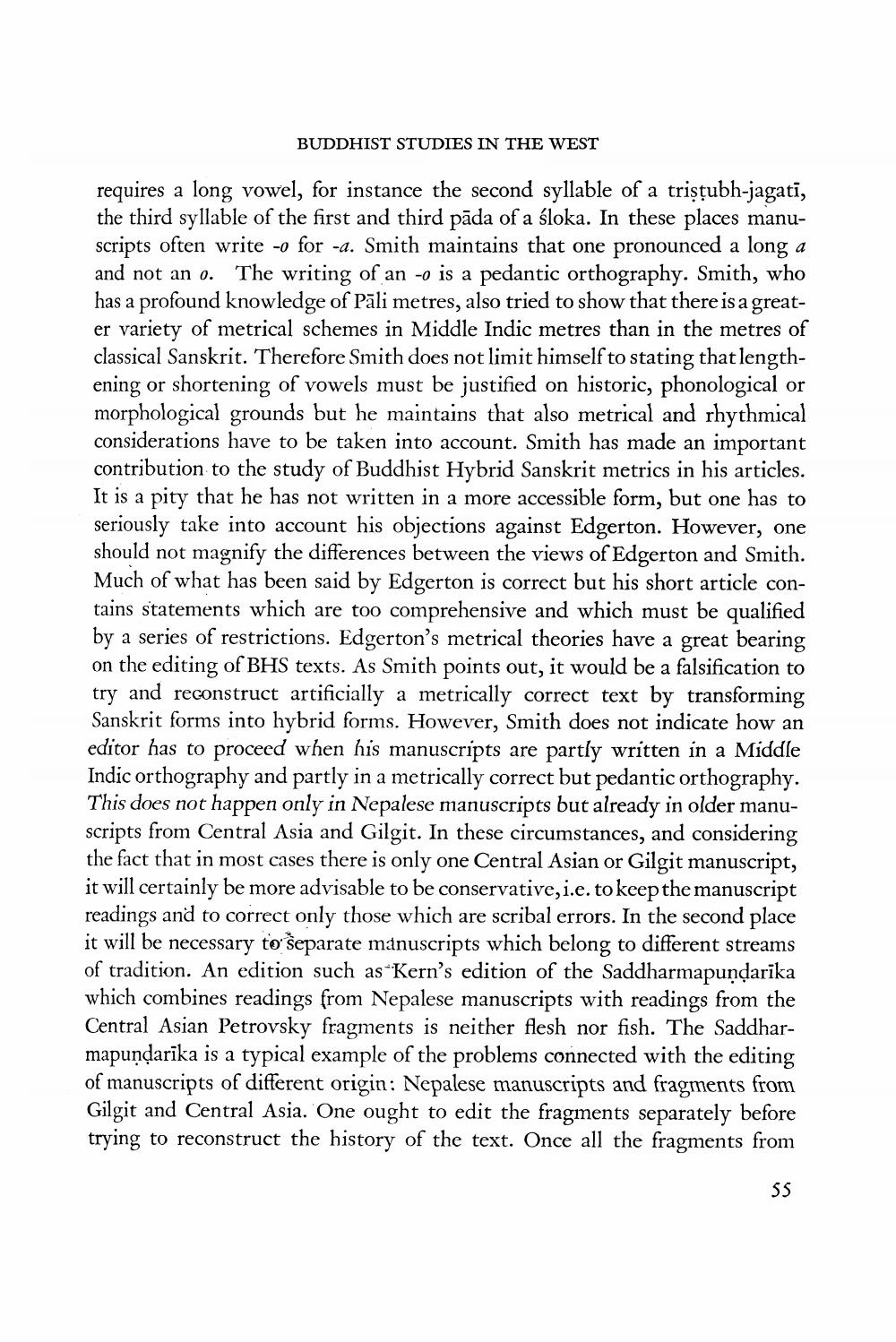________________
BUDDHIST STUDIES IN THE WEST
requires a long vowel, for instance the second syllable of a trişțubh-jagati, the third syllable of the first and third pāda of a śloka. In these places manuscripts often write -o for -a. Smith maintains that one pronounced a long a and not an o. The writing of an -o is a pedantic orthography. Smith, who has a profound knowledge of Pāli metres, also tried to show that there is a greater variety of metrical schemes in Middle Indic metres than in the metres of classical Sanskrit. Therefore Smith does not limit himself to stating that lengthening or shortening of vowels must be justified on historic, phonological or morphological grounds but he maintains that also metrical and rhythmical considerations have to be taken into account. Smith has made an important contribution to the study of Buddhist Hybrid Sanskrit metrics in his articles. It is a pity that he has not written in a more accessible form, but one has to seriously take into account his objections against Edgerton. However, one should not magnify the differences between the views of Edgerton and Smith. Much of what has been said by Edgerton is correct but his short article contains statements which are too comprehensive and which must be qualified by a series of restrictions. Edgerton's metrical theories have a great bearing on the editing of BHS texts. As Smith points out, it would be a falsification to try and reconstruct artificially a metrically correct text by transforming Sanskrit forms into hybrid forms. However, Smith does not indicate how an editor has to proceed when his manuscripts are partly written in a Middle Indic orthography and partly in a metrically correct but pedantic orthography. This does not happen only in Nepalese manuscripts but already in older manuscripts from Central Asia and Gilgit. In these circumstances, and considering the fact that in most cases there is only one Central Asian or Gilgit manuscript, it will certainly be more advisable to be conservative, i.e. to keep the manuscript readings and to correct only those which are scribal errors. In the second place it will be necessary to separate manuscripts which belong to different streams of tradition. An edition such as Kern's edition of the Saddharmapundarika which combines readings from Nepalese manuscripts with readings from the Central Asian Petrovsky fragments is neither flesh nor fish. The Saddharmapundarīka is a typical example of the problems connected with the editing of manuscripts of different origin: Nepalese manuscripts and fragments from Gilgit and Central Asia. One ought to edit the fragments separately before trying to reconstruct the history of the text. Once all the fragments from
55




